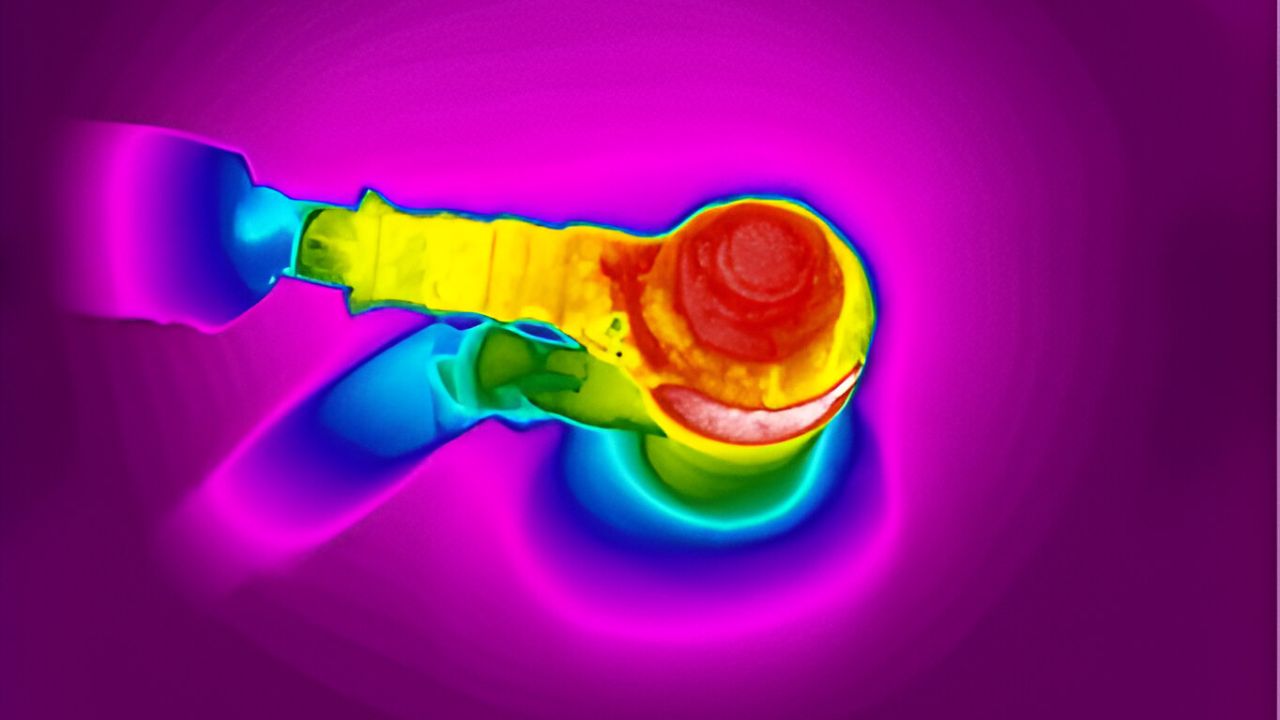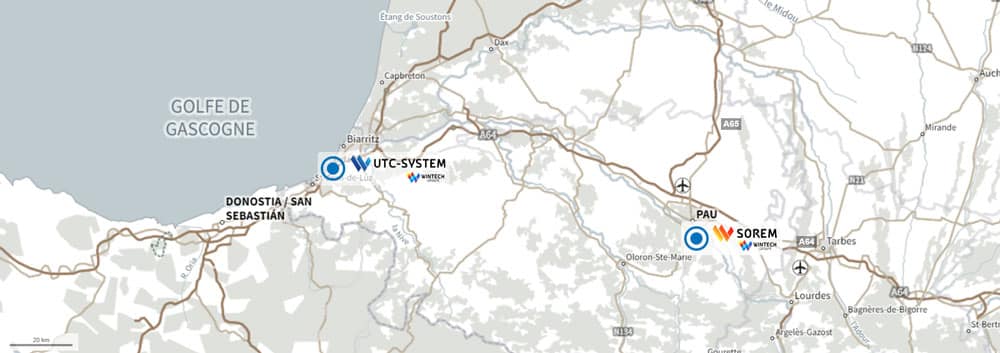Fire detection, a key issue for industry and local authorities
Fires in the workplace can cause considerable damage to facilities and threaten the lives of employees. But beyond the direct consequences, a fire in a factory is always synonymous with heavy economic losses for the company or local authority. According to the INRS, 70% of companies that suffer a serious fire close down within a year.
Improving fire prevention and fire detection systems is therefore a major challenge. To make the right decisions, it is important to understand the main causes of fires and to identify the areas most at risk.
Fire: the industrial sectors and locations most at risk
We often think that industrial fires mainly affect establishments that produce and store highly flammable chemical substances (Seveso-classified sites in Europe). However, a fire is triggered by a combination of several factors (fuel, combustive agent and source of inflammation). So, any industrial activity is affected by the risk of fire, not only because of the nature of the materials it contains, but also because of the activities that take place there.
The most vulnerable sectors include:
- The metallurgical industry: foundries, steelworks, cement works, glassworks and all processing plants, which are, by definition, hot-spot work areas.
- Waste storage sites: the waste treatment sector regularly tops the list of the most serious fires. In 2014, waste pits alone accounted for 19% of accidents in all industrial sectors. This more frequent occurrence can be explained by the accumulation of conditions conducive to fire starting in waste pits: the presence of combustible materials (cardboard, paper, plastics, wood, etc.) or intrinsically flammable products, the proximity of ignition sources (sparks from machines, or faulty electrical equipment) or the absence of strict separation between different types of waste.
- The chemical and petrochemical industry, because of the flammable nature of the products stored and regularly handled. They can cause very serious fires that are dangerous for the environment.
- The wood and paper industry: wood processing plants, sawmills, and paper manufacturing facilities are also considered highly vulnerable to fire due to the presence of flammable wood dust and the cutting, drying, and treatment operations that generate heat.
- The agri-food sector: food processing plants, grain silos, and food storage warehouses are subject to fire risks due to the combination of flammable materials, such as oils, fats, and solvents, and cooking and heating processes.
- Electric battery storage areas: lithium batteries are an increasingly common cause of fire, due to their ability to self-ignite if stored or handled inappropriately. Each year there are around 150 fires at battery storage sites in France.
- Data centres: while electrical faults are the most frequent cause of fires in data centres, the overheating of lithium-ion batteries, used to store energy, is a known and proven risk. According to the consulting firm Frost & Sullivan, lithium-ion batteries, commonly used in uninterruptible power supplies, are expected to account for 38.5% of the data centre battery market by 2025, compared with 15% in 2020.
- Electrical and electronics industry: electrical installations, data centres, and electronic manufacturing plants are vulnerable to fire due to risks overheating of electrical equipment, short circuits, cable failures, and faulty cooling systems.
The main causes of industrial fires
The fire triangle: the conditions necessary for a fire to start
A fire always starts when three conditions are met:
- the presence of a fuel (flammable material or product, whether chemicals, paper, wood, plastic etc.);
- an oxidiser (oxygen);
- And finally, a source of ignition: a spark, a direct flame, or a rise in temperature.
These three elements combine to form the “fire triangle”, resulting in a reaction that leads to combustion. When a fire breaks out, only the removal of one of these three factors can stop the combustion process.
Working with hot spots: a high-risk fire hazard
One of the most common causes of fire in the industrial fire is hot-spot work, which creates the ignition source to start a fire. This includes all activities that generate open flames or incandescent sparks, such as welding, cutting, grinding, or flame cutting. The presence of one or more of these flammable materials in the direct vicinity of these hot spots considerably increases the risk of fire.
The human factor: an underlying cause of fires
In the industrial environment, a large number of fires are first and foremost the result of human error or a lack of prevention. A poor organisation of space, inappropriate use of certain equipment, lack of risk awareness or careless or negligent behaviour (a cigarette left next to flammable products) are always the root of many preventable disasters. There is also a proportion of fires caused by malicious acts, although these are difficult to quantify in the industrial sector.
Electrical faults: the leading cause of fires
Contrary to popular belief, it is not always necessary to use flame-producing machinery alongside combustible materials to start a fire. In factories, there is a hidden but very real danger behind the doors of switchgear and power distribution equipment. In effect, in France, electrical faults are the leading cause of fires: they account for 30% of all fire insurance claims. The main cause of electrical fires is faulty or non-compliant installation. This can result in the formation of electric arcs, short circuits, overloads, or electrostatic discharges.
The importance of detecting fire outbreaks in the industrial environments
When a fire breaks out in a workplace, it first represents a threat to human life. Since personal safety is an absolute priority, fire prevention aims to avoid any risk of injury or death in the first place. This is why French fire-fighting regulations focus primarily on evacuation procedures and fire extinguishing and safety systems.
But beyond the human aspect, it is the financial and economic aspect that is at stake. In the best-case scenario, a fire means the loss of one or more of the stocks and the shutdown of a production line or factory. However, it should be remembered that the majority of companies that suffer from a serious fire do not recover: two out of three companies close down within a year, according to statistics published by the French INRS.
A fire that breaks out represents a serious economic threat as soon as the first smoke appears. To avoid these serious situations, it is crucial to put in place effective prevention rules, combines with technological means of early fire detection, capable of sounding the alarm well before the first visible signs appear.
Fires in the workplace can cause considerable damage to facilities and threaten the lives of employees. But beyond the direct consequences, a fire in a factory is always synonymous with heavy economic losses for the company or local authority. According to the INRS, 70% of companies that suffer a serious fire close down within a year.
Improving fire prevention and fire detection systems is therefore a major challenge. To make the right decisions, it is important to understand the main causes of fires and to identify the areas most at risk.
Fire: the industrial sectors and locations most at risk
We often think that industrial fires mainly affect establishments that produce and store highly flammable chemical substances (Seveso-classified sites in Europe). However, a fire is triggered by a combination of several factors (fuel, combustive agent and source of inflammation). So, any industrial activity is affected by the risk of fire, not only because of the nature of the materials it contains, but also because of the activities that take place there.
The most vulnerable sectors include:
- The metallurgical industry: foundries, steelworks, cement works, glassworks and all processing plants, which are, by definition, hot-spot work areas.
- Waste storage sites: the waste treatment sector regularly tops the list of the most serious fires. In 2014, waste pits alone accounted for 19% of accidents in all industrial sectors. This more frequent occurrence can be explained by the accumulation of conditions conducive to fire starting in waste pits: the presence of combustible materials (cardboard, paper, plastics, wood, etc.) or intrinsically flammable products, the proximity of ignition sources (sparks from machines, or faulty electrical equipment) or the absence of strict separation between different types of waste.
- The chemical and petrochemical industry, because of the flammable nature of the products stored and regularly handled. They can cause very serious fires that are dangerous for the environment.
- The wood and paper industry: wood processing plants, sawmills, and paper manufacturing facilities are also considered highly vulnerable to fire due to the presence of flammable wood dust and the cutting, drying, and treatment operations that generate heat.
- The agri-food sector: food processing plants, grain silos, and food storage warehouses are subject to fire risks due to the combination of flammable materials, such as oils, fats, and solvents, and cooking and heating processes.
- Electric battery storage areas: lithium batteries are an increasingly common cause of fire, due to their ability to self-ignite if stored or handled inappropriately. Each year there are around 150 fires at battery storage sites in France.
- Data centres: while electrical faults are the most frequent cause of fires in data centres, the overheating of lithium-ion batteries, used to store energy, is a known and proven risk. According to the consulting firm Frost & Sullivan, lithium-ion batteries, commonly used in uninterruptible power supplies, are expected to account for 38.5% of the data centre battery market by 2025, compared with 15% in 2020.
- Electrical and electronics industry: electrical installations, data centres, and electronic manufacturing plants are vulnerable to fire due to risks overheating of electrical equipment, short circuits, cable failures, and faulty cooling systems.
The main causes of industrial fires
The fire triangle: the conditions necessary for a fire to start
A fire always starts when three conditions are met:
- the presence of a fuel (flammable material or product, whether chemicals, paper, wood, plastic etc.);
- an oxidiser (oxygen);
- And finally, a source of ignition: a spark, a direct flame, or a rise in temperature.
These three elements combine to form the “fire triangle”, resulting in a reaction that leads to combustion. When a fire breaks out, only the removal of one of these three factors can stop the combustion process.
Working with hot spots: a high-risk fire hazard
One of the most common causes of fire in the industrial fire is hot-spot work, which creates the ignition source to start a fire. This includes all activities that generate open flames or incandescent sparks, such as welding, cutting, grinding, or flame cutting. The presence of one or more of these flammable materials in the direct vicinity of these hot spots considerably increases the risk of fire.
The human factor: an underlying cause of fires
In the industrial environment, a large number of fires are first and foremost the result of human error or a lack of prevention. A poor organisation of space, inappropriate use of certain equipment, lack of risk awareness or careless or negligent behaviour (a cigarette left next to flammable products) are always the root of many preventable disasters. There is also a proportion of fires caused by malicious acts, although these are difficult to quantify in the industrial sector.
Electrical faults: the leading cause of fires
Contrary to popular belief, it is not always necessary to use flame-producing machinery alongside combustible materials to start a fire. In factories, there is a hidden but very real danger behind the doors of switchgear and power distribution equipment. In effect, in France, electrical faults are the leading cause of fires: they account for 30% of all fire insurance claims. The main cause of electrical fires is faulty or non-compliant installation. This can result in the formation of electric arcs, short circuits, overloads, or electrostatic discharges.
The importance of detecting fire outbreaks in the industrial environments
When a fire breaks out in a workplace, it first represents a threat to human life. Since personal safety is an absolute priority, fire prevention aims to avoid any risk of injury or death in the first place. This is why French fire-fighting regulations focus primarily on evacuation procedures and fire extinguishing and safety systems.
But beyond the human aspect, it is the financial and economic aspect that is at stake. In the best-case scenario, a fire means the loss of one or more of the stocks and the shutdown of a production line or factory. However, it should be remembered that the majority of companies that suffer from a serious fire do not recover: two out of three companies close down within a year, according to statistics published by the French INRS.
A fire that breaks out represents a serious economic threat as soon as the first smoke appears. To avoid these serious situations, it is crucial to put in place effective prevention rules, combines with technological means of early fire detection, capable of sounding the alarm well before the first visible signs appear.

















